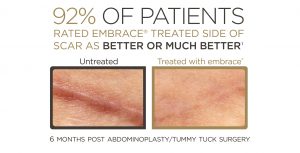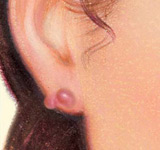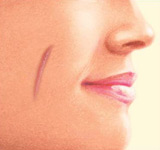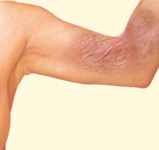Nobody loves a scar. Well, ok, there are always a few exceptions, so let’s say very few people feel good about their scars.
Some facts and fiction:
FIRST- SCAR FACTS:
- Any “assault” on your skin; a cut, a surgical incision, a burn, trauma, any tear on your body’s largest organ (your skin), may leave a scar.
- Scarring is part of the body’s natural way of healing an injury.
- There are different types of scars, different sizes, shapes, and depths. They occur internally, as well as on the surface of the skin.
- Board-Certified Plastic Surgeons are specialists in the treatment of skin and tissue, and are trained in techniques to produce the best results possible to minimize scarring. The word ‘Plastic’ in Plastic Surgery, is derived from the Greek word plastikos – meaning to mold, or form. (so, Plastic Surgeons, are expert in the areas of the skin, tissue, and all that lies beneath)
SCAR FICTION:
- Watch out for anyone who says they can perform a surgical procedure with “absolutely no scarring!” The most that an ethical medical practitioner can reasonably promise is “doing everything possible to minimize the appearance of scarring.”
You’ll see a statement similar to that on products that promise scar help, and on doctors’ websites describing surgeries. Understand that it means, once again, where there is a cut- there will be some kind of scar.
TYPES OF SCARS
-
- Small surface discolorations and irregularities
- Hypertropic Scars – thick raised tissue around a wound, may become dark or light in color
-
- Keloids – Large, sometimes painful and protruding scars
- Contractures – scars that can constrict or tighten the skin and deeper, underlying tissue (depending on where the surgery or injury has occurred). A contracture may inhibit movement, and even affect muscles and nerves. Burn patients, mastectomy patients, and even patients with various cosmetic implants, may develop a contracture.
WHAT TO DO:
1. Follow your doctor’s orders That’s number 1 for a reason. If you’ve had surgery (cosmetic, elective, or other), you need to continue participating in your own after-care, following your treatment. Your Plastic Surgeon has already worked carefully to give you the best possible outcome, and the most discreet incisions. Following a Cosmetic Surgery, you’ll be given detailed instructions on caring for your incisions, dressings, etc. If your doctor has instructed you to apply creams, salves, or treatments to your wound areas, do it! Much of your post-surgery routine is designed to prevent infection and promote healing. Following instructions will help you get the best result in reducing the appearance of scars.
2. Be Patient Post-surgical scars can be small or large. (An extended tummy tuck scar may go around the abdomen, whereas a breast augmentation scar, may be a small, hidden spot in the armpit). As the months go by, the surgical scar will fade in color, and ‘settle down.’
3. Scar Revision In some cases, scarring may need or benefit from a further surgical treatment. Scar Revision is a surgical technique- where a new incision is made, to remove the old scar. Your plastic surgeon will decide on a course of action based on the type of problem you’re having. Your scar may be repositioned, your wound may be closed in a different fashion, etc.
DOES INSURANCE COVER SCAR TREATMENT?
Sometimes, yes. If your scar is affecting your physical movement in some way, your insurer may cover additional surgery, and treatments.
NON-SURGICAL SCAR HELP?
There are many treatments available that are effective to varying degrees, in reducing the appearance of your scars. Ideally, these should be used during the initial healing period.
- Among the newest treatments we’re using is the “Embrace” scar therapy system. The manufacturers refer to it as ‘active scar defense.’ It’s a refined use of silicone sheeting that adheres to the skin. The patient begins using it, after the stitches or staples are removed. Similar to a specialized, tension-inducing bandage, or larger form “steri-strips”- the makers claim the sheeting helps the skin heal in a more seamless way.

from: Embrace website
- Steroid injections or creams are often used to discourage scar formation, or to reduce the scar once it has appeared.
- Injections of various forms of fillers may be used to fill a sunken or concave area of scarring. These may need to be repeated to continue the effect.
- Topical treatments available in many doctors’ offices, drug stores, etc., include gels, creams, and tapes, that also aid in reducing the scar’s appearance.
We’ll encourage all of you, once again, to talk to your doctor – first! – before you decide to try your grandmother’s or your best friend’s homemade solution for scar treatment.
There are many options available, and your doctor will work to ensure you have the best result possible.
[Dr. Vincent Lepore is a Board-Certified, Stanford trained Plastic Surgeon, serving patients in San Jose, Silicon Valley, and the entire Bay Area. Please call for your free Cosmetic Consultation, (408) 356-4241.]






